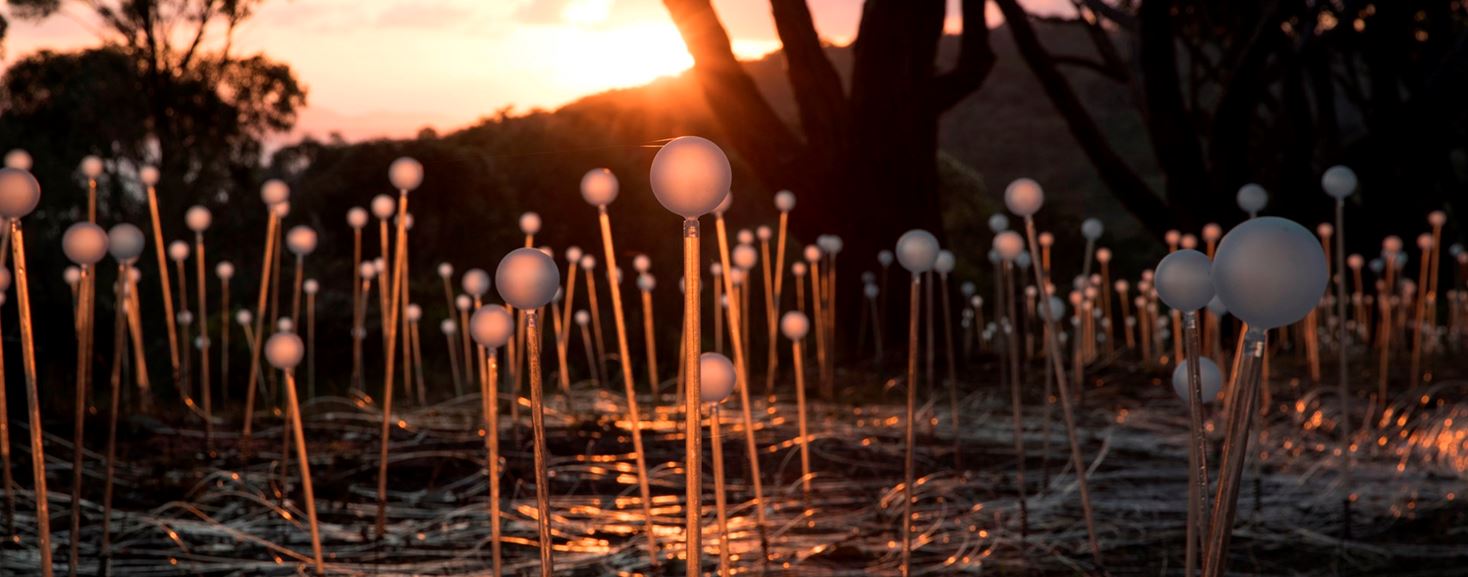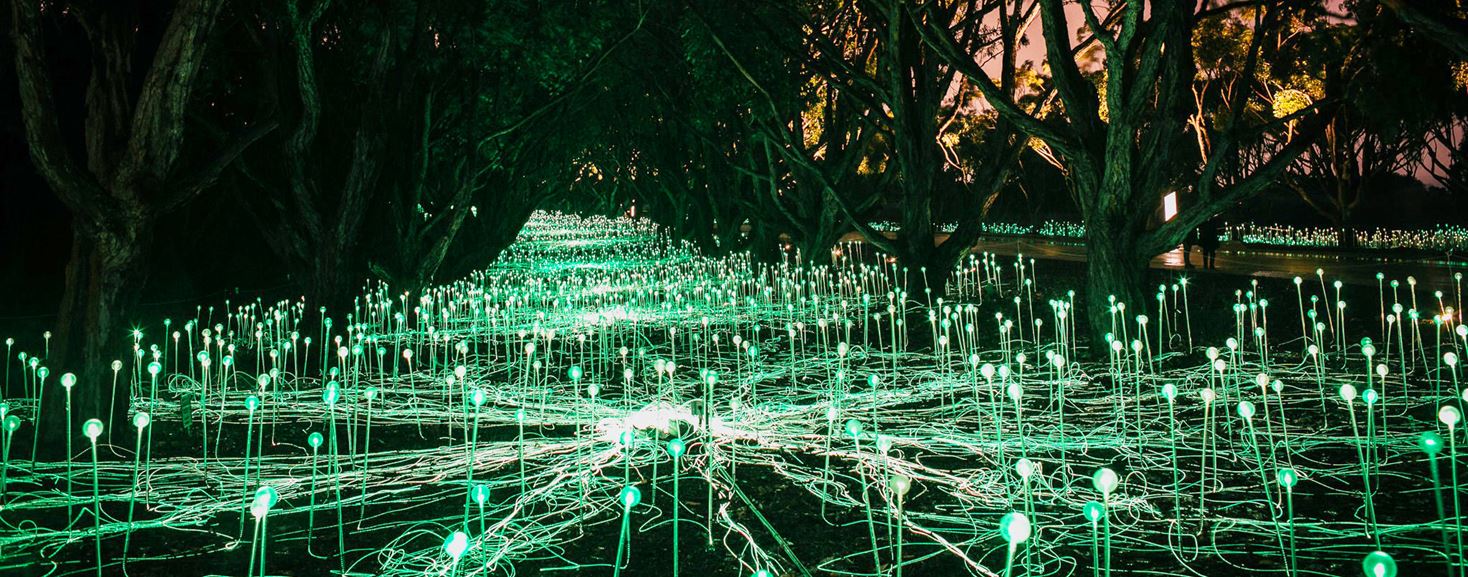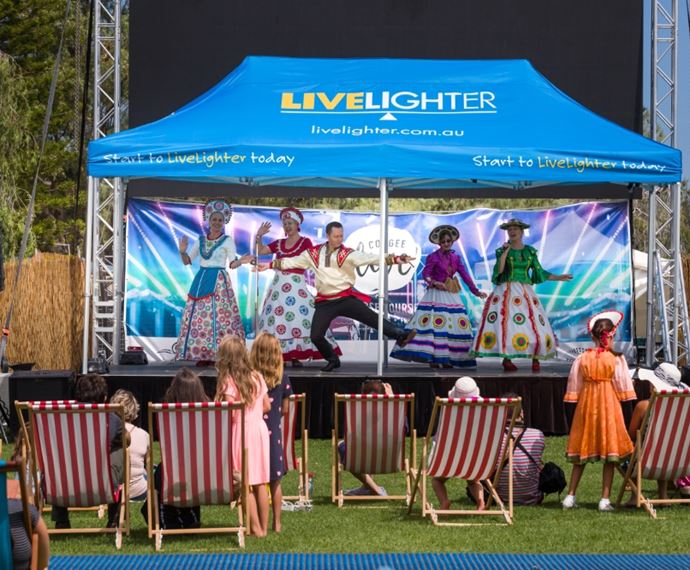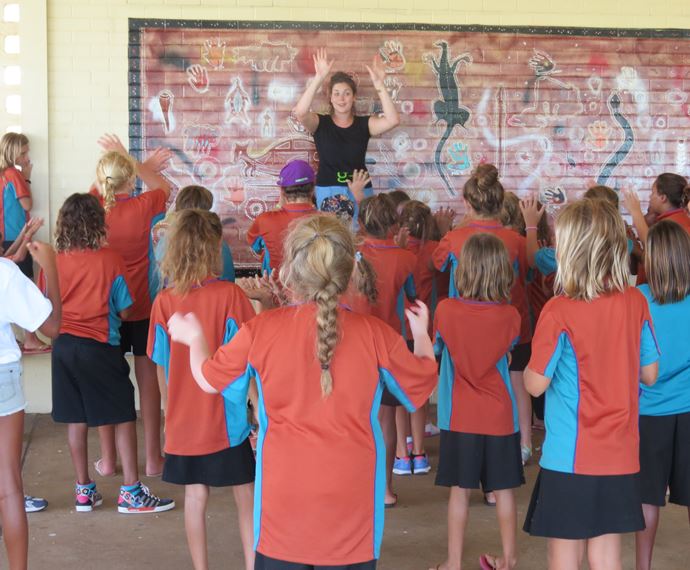Field of Light: Avenue of Honour
Field of Light: Avenue of Honour was an immersive art installation paying homage to the ANZACs with 16,000 shining spheres marking the last sight of home for the 41,000 troops who departed from Albany for World War I. Delivered through a partnership led by the City of Albany, FORM, RSLWA and the Albany RSL sub-branch, the installation transformed the memorial avenue on Mount Clarence into a deeply reflective and commemorative experience for visitors and locals.
Designed by internationally renowned United Kingdom artist Bruce Munro, the artwork coincided with the culmination of the 2014 to 2018 ANZAC Centenary and established Albany as a pilgrimage destination to close this nationally significant commemorative period.
To increase visitation to the Great Southern through delivery of a world-class event commemorating the ANZAC Centenary and honouring the role Albany played in World War I.
City of Albany
1/1/2018
$960,000
Lotterywest
$300,000
Great Southern
General Community
- More than 185,000 individual visits from people within the local community, across the State and Australia, and overseas, from countries as far away as the United Kingdom and Canada.
- Access and inclusion was prioritised in visitor experience design to allow people of all abilities and from all walks of life to visit and immerse themselves in the experience.
- Reflection, pride and emotion were the three most common feelings that visitors expressed after seeing the installation.
- The event served to enhance positive awareness of Albany and the broader Great Southern Region as a world-class tourist destination as part of the City of Albany’s broader cultural tourism project.
- Strong partnerships and community engagement laid the foundation for success of the event and future opportunities.
- Engagement with 75 volunteers across an eight month period, including families and descendants of ANZAC forces.
- The visually striking installation captured attention around the State, increasing visitation to the region and the event being featured internationally.
- Mosquitos around the installation caused concern to the project team and visitors. Earlier strategies to limit insect activity would be considered in the future.
- Temporary fencing was needed to protect the site overnight, requiring additional resources.
- Limited parking within the site and higher-than-expected visitation created significant traffic congestion.

Opportunity
From 2014 to 2018 Australia marked the ANZAC Centenary. This was an important period of national commemoration, honouring the service and sacrifice of the first ANZACs as well as those that have followed in their footsteps.
Albany is widely regarded as the birthplace of the ANZACs, the port where the first contingent of Australian and New Zealand troops bound for the Great War in Europe gathered and then departed in convoy on 1 November 1914 [1]. The first convoy of 38 ships, mostly converted merchant vessels, carried 21,500 Australians and 8,500 New Zealanders [1].
Australia’s involvement in the First World War is still regarded as a formative moment in our nation’s history and remains Australia’s costliest conflict. More than 60,000 were killed and 156,000 were wounded, gassed or taken prisoner [2].
Albany played a lead role in national commemorations and, after launching the ANZAC Centenary in November 2014, there was an opportunity to deliver a closing event that was again fitting of Albany’s place in the ANZAC story.
“Albany has been at the centre of Australia's commemorations of 100 years since our involvement in the First World War, which is fitting as it was the last piece of Australian soil that many ANZAC troops saw before departing for the battlefields.”
WA Premier Mark McGowan [3]
Approach
In collaboration with FORM and RSLWA, a program of commemorative events was planned with Field of Light: Avenue of Honour as the centrepiece. Bruce Munro was invited to design the installation and after several visits to Albany from 2016 onwards, he identified the Avenue of Honour as the most appropriate site, conceptually, emotionally, and logistically, for his artwork.
Until Field of Light: Avenue of Honour, Bruce Munro was best known in Australia for his massive light installation at Uluru. The Albany installation was premised on a similar idea to the Uluru installation, which was a mass of 16,000 glass spheres on stems, igniting at sunset, connected by a maze of luminous fibre-optic cables, glowing on the ground like the veins and arteries of a living being.
“To be given an opportunity to create a work in remembrance of the ANZACs is a wonderful honour and a privilege. Albany would have been the last sight of home for many, and this is a poignant thought.”
Bruce Munro
Inspired by the ANZAC story, the artist selected the tree-lined avenue on Mount Clarence in Albany’s Heritage Park for a special work memorialising the sacrifices of those who served and their families. The themes of memory and returning were at the heart of this installation. While lights in the Uluru installation glowed in all colours and covered the area of four football pitches, Albany’s installation was more compact, and took on the colours of the national flowers of Australia and New Zealand, gold for wattle, green for kowhai. The colour theme was especially symbolic because it was wildflower season when many of the troops left for the battlefields of Europe and Africa.

Impacts and outcomes
Expected to draw around 25,000 people, Field of Light: Avenue of Honour was activated and attracted more than 185,000 individual visits from people within the local community, across the State and Australia, and overseas, from countries as far away as the United Kingdom and Canada.
Visitation was a key outcome with access and inclusion prioritised to allow people of all abilities and from all walks of life to visit and immerse themselves in the experience. Dedicated nights for vehicle access were popular and ensured those with limited mobility did not miss this once-in-a-lifetime experience.
“I was touched and captivated by the lights. My niece and nephew discovered an ancestor had served for our country listening to the audio guide, their faces lit up in surprise and pride - a moment I will not forget.”
Visitor
Survey feedback from the event was overwhelmingly positive, with 99.8 per cent of those surveyed by FORM reporting positive feedback on their experience. Reflection, pride and emotion were the three most common feelings that visitors expressed after seeing the installation.
Community engagement and participation was another key outcome of the event. A group of 75 committed volunteers contributed their time and effort to the project across all stages of the eight-month period, including installation and pack down. These volunteers were among the project’s most passionate advocates, not only playing an important role in its operation, but also functioning as a voice for Field of Light: Avenue of Honour among the local community.
Among the volunteers helping with installation were the families and descendants of ANZAC forces. The installation also offered the opportunity for cultural engagement and community involvement at various stages of the installation and exhibition.
“I have been a volunteer for countless years, and this has been one of the best experiences. I have been honoured to work throughout the project.”
Volunteer
The event served to enhance positive awareness of Albany and the broader Great Southern Region as a world-class tourist destination as part of the City of Albany’s broader cultural tourism project. The installation built upon the considerable amount of work completed over several years on enhancement and activation of the Albany region through strategic goals by the City of Albany, the State Government and Tourism WA, particularly within the Albany Heritage Park. This project sought to increase overall visitation to the Albany Heritage Park Precinct, from both residents and visitors, as well as Albany and the broader Great Southern Region throughout the seven-month duration of the event and beyond.
The months of March and April 2019 were the busiest on record for the National Anzac Centre, which also reported a 19 percent increase in visitation from 2016-17, and a 22 percent increase from 2017-18 over the duration of installation. Overall, $17,166,991 was injected into the local economy due to the Field of Light: Avenue of Honour, with 82,238 visitor nights generated.
FORM’s survey results indicated 91 percent of business owners had experienced a positive impact on their business, and 100 percent of business owners wanted to see more cultural events occurring in the Great Southern region.
The installation has received national recognition, winning the National Parks & Leisure Australia 2019 Awards of Excellence, for Community Based Initiative of the Year.
“The installation has been an enormous boon to the Albany economy and, through raised awareness from these events, will continue to have an effect for some time to come.”
Community Radio Announcer
What worked?
Community engagement laid the foundation for future opportunities
Strong partnerships and community engagement were key to the success of what was a logistically complex and lengthy event. The timing of the installation opened additional community engagement opportunities such as the Remembrance Day choral production By Other Eyes to commemorate a hundred years since Armistice, and collaborations with other events like Taste Great Southern and ANZAC Day.
The immersive and visually striking installation captured attention
Field of Light: Avenue of Honour demonstrated the pulling power of experiential cultural attractions and events, and the flow-on economic benefits they deliver. Coverage reached as far as the United Kingdom, New Zealand, Hong Kong and Singapore, introducing new audiences to Albany’s brand. In Hong Kong, commuter trams were skinned in Field of Light: Avenue of Honour imagery as part of Tourism WA’s consumer activity, capitalising on the Asian interest in Bruce Munro’s artwork.
Key challenges
An outdoor installation created particular challenges
Mosquitos around the installation caused concern and were managed by the environmental health team by providing insect repellent for visitors to carry with them. The organisers are unsure whether the lights attracted the mosquitos. However, in hindsight, earlier strategies to limit insect activity could have been considered.
Another consequence of outdoor installation was that additional temporary gate infrastructure needed to be constructed to manage access to the site and protect the installation when closed overnight.
Greater than anticipated visitor numbers generated logistical pressures
Limited parking within the site and the higher-than-expected visitation created significant traffic congestion in Albany Heritage Park. To address this, the organisers had to adjust the traffic management plan, bring on additional traffic wardens and add extra shuttle services.
REFERENCES
- Department of Veterans' Affairs. (2021). First convoy of Australian troops in World War I. DVA Anzac Portal. Retrieved 23 November 2021 from https://anzacportal.dva.gov.au/wars-and-missions/ww1/where-australians-served/first-convoy
- Australian War Memorial. (2021). First World War 1914 - 18. retrieved 23 November 2021 from https://www.awm.gov.au/articles/atwar/first-world-war
- Government of Western Australia. (2017, 7 December). Albany to shine during Anzac commemorations https://www.mediastatements.wa.gov.au/Pages/McGowan/2017/12/Albany-to-shine-during-Anzac-commemorations.aspx
Learn about wellbeing
Understand how your community is going to help you to better target and plan your project.
Ready to plan your project?
Understand your vision, plan your impact and report on the outcomes of your project with three easy interactive tools in the Community Impact Planner.
Acknowledgement of Country
The Western Australian Community Impact Hub acknowledges and pays respect to the Traditional Owners of the land on which we are based, the Whadjuk people of the Noongar Nation and extends that respect to all the Traditional Owners and Elders of this country. We recognise the significant importance of their cultural heritage, values and beliefs and how these contribute to the positive health and wellbeing of the whole community.




